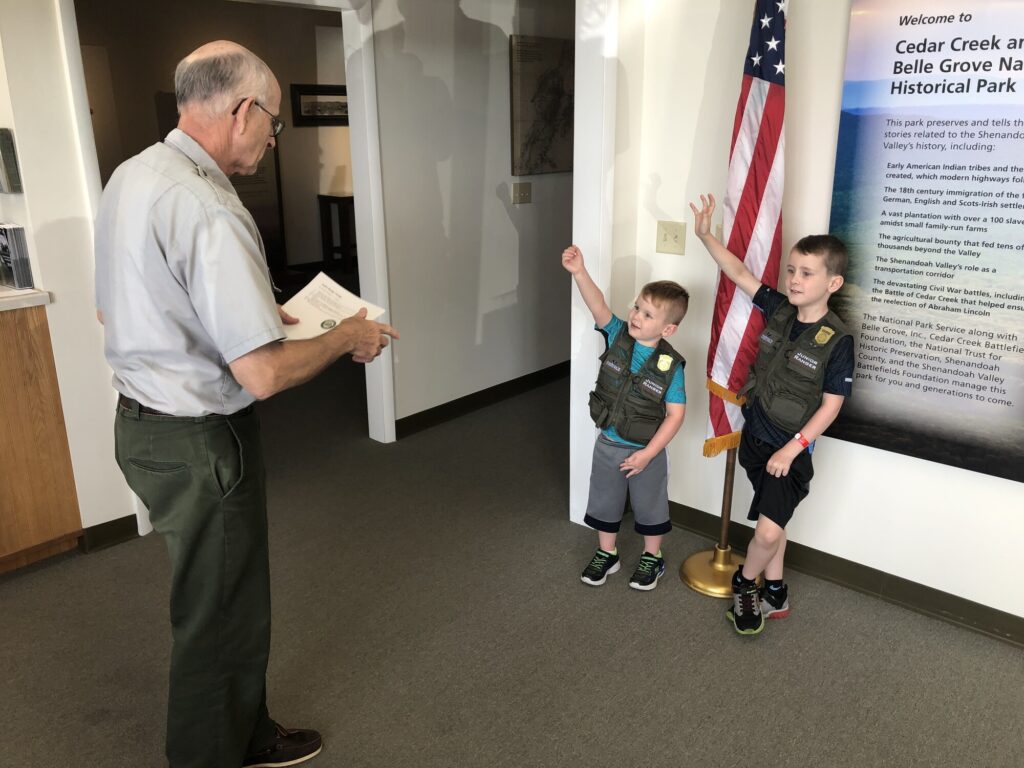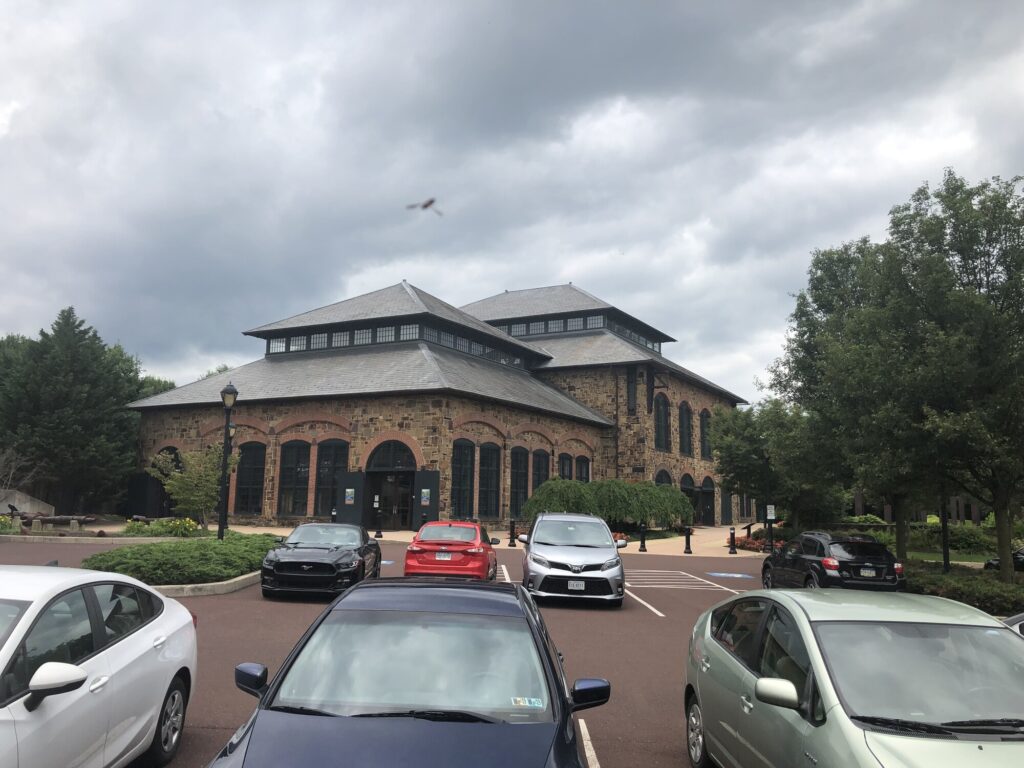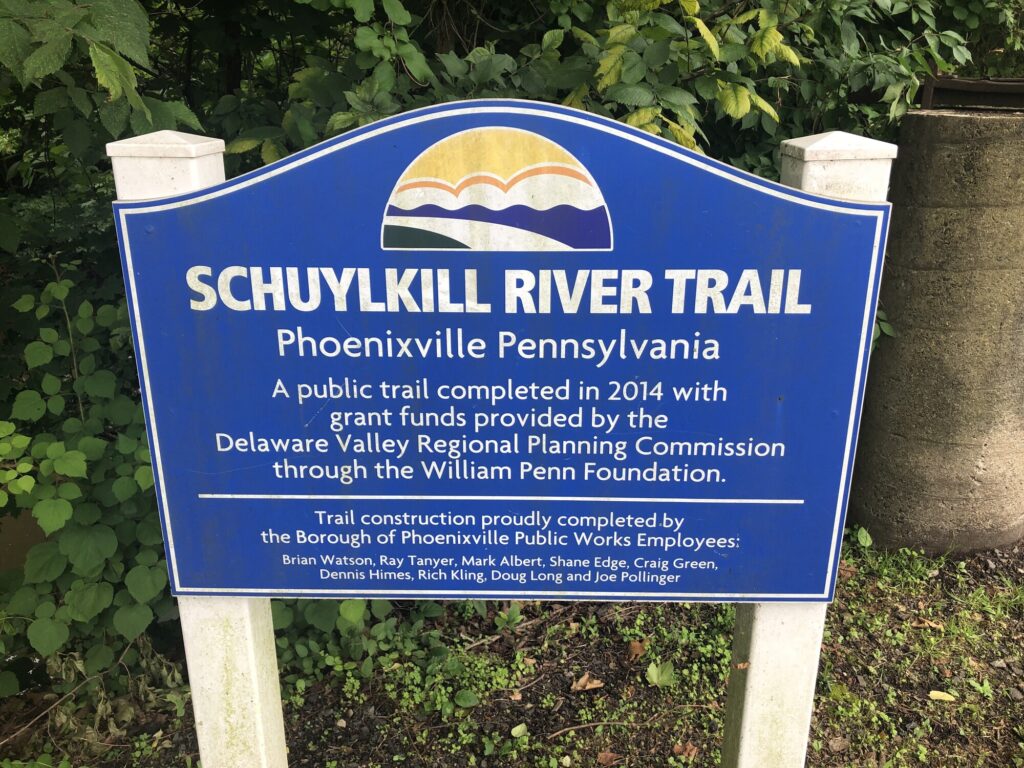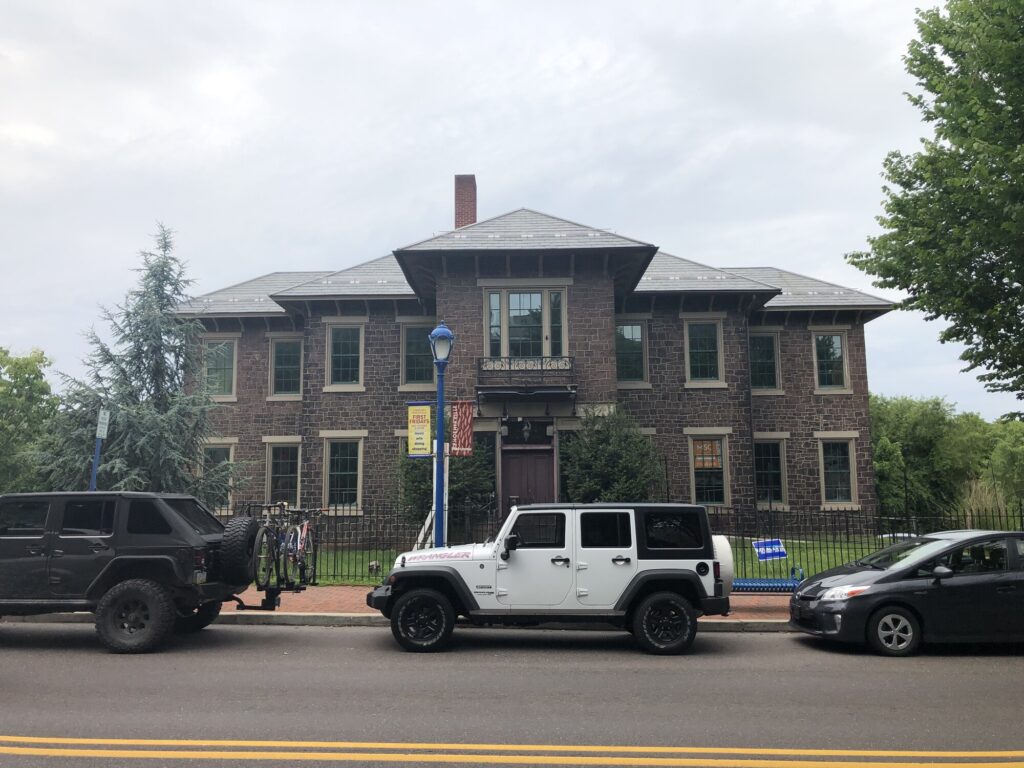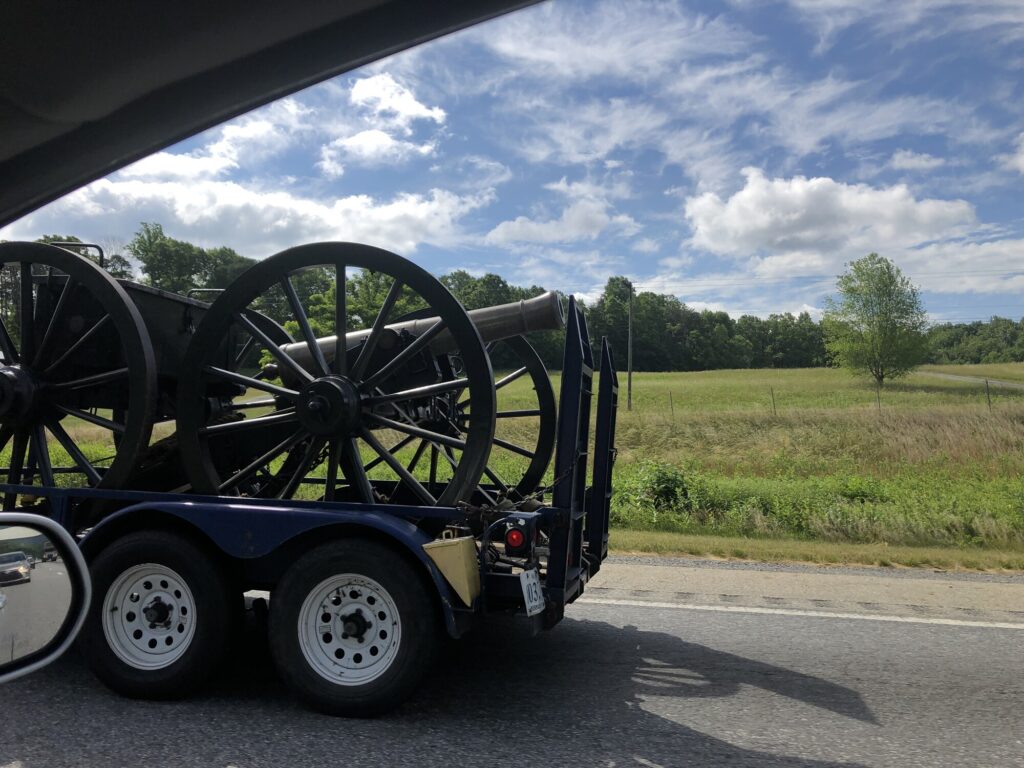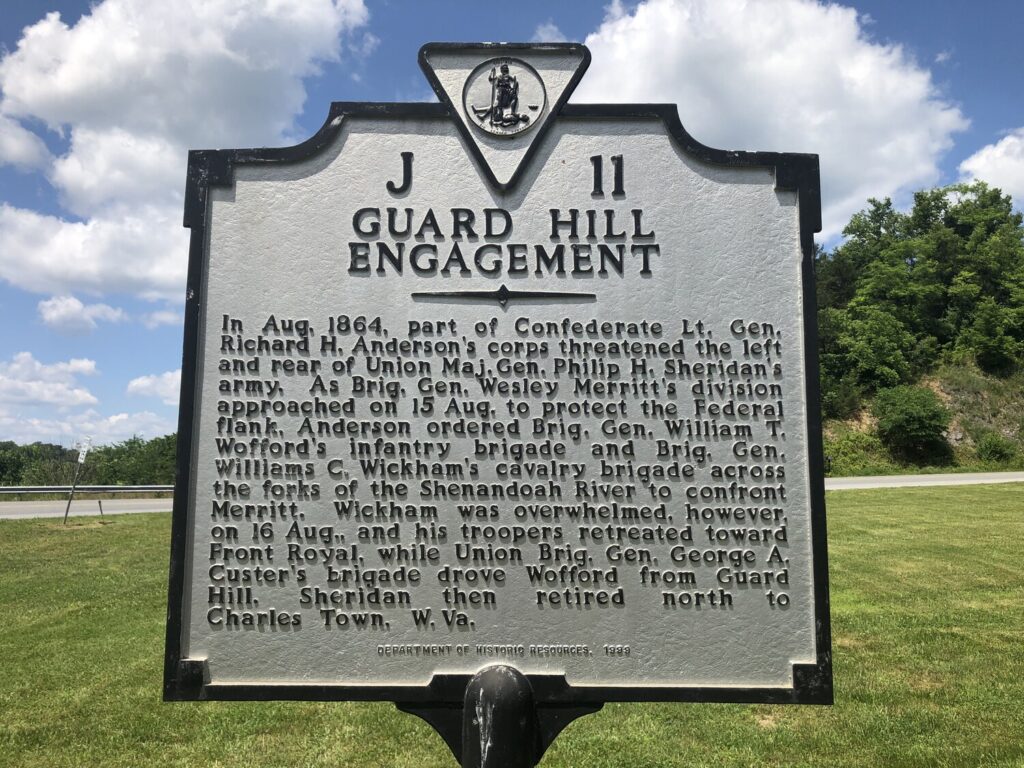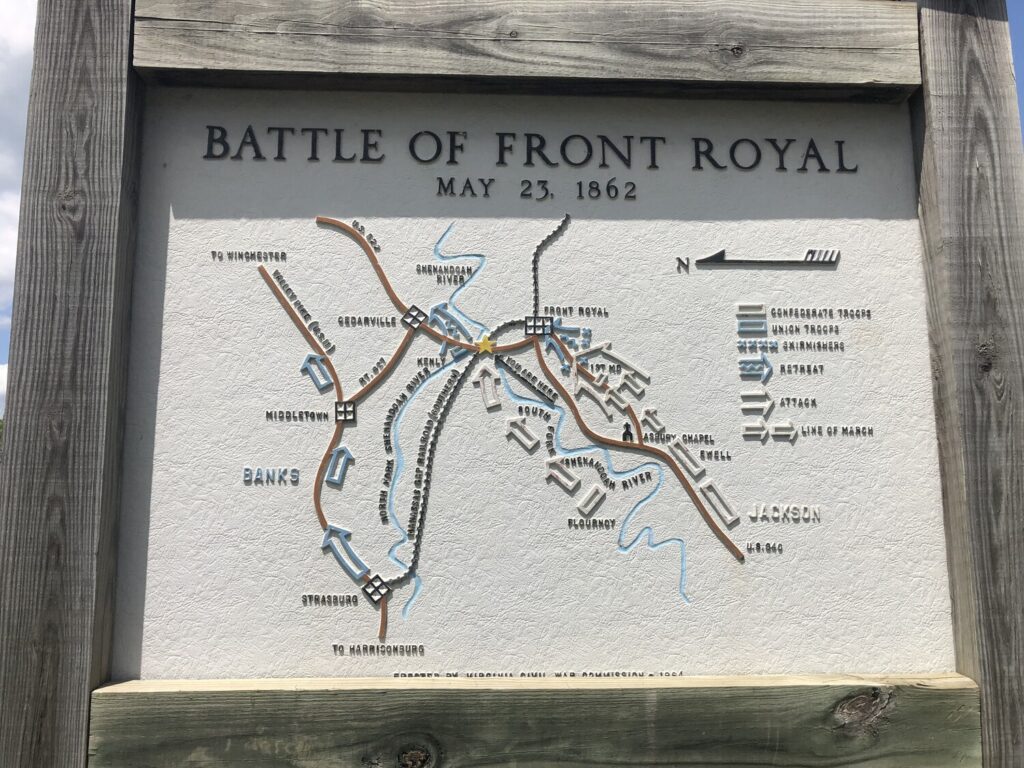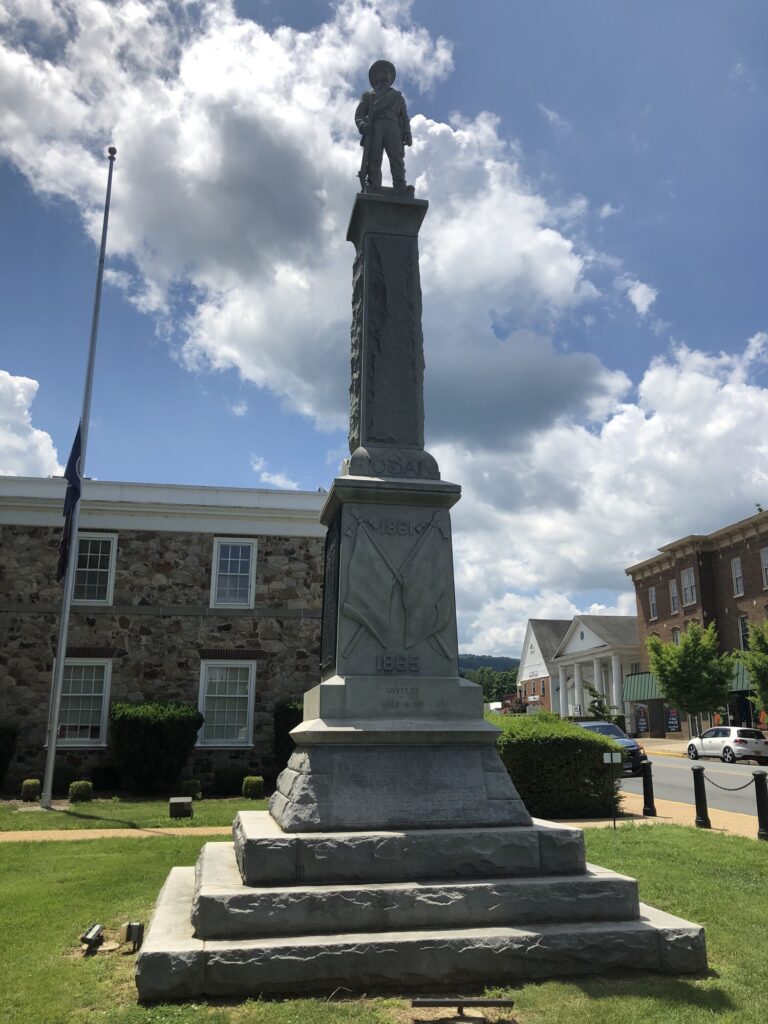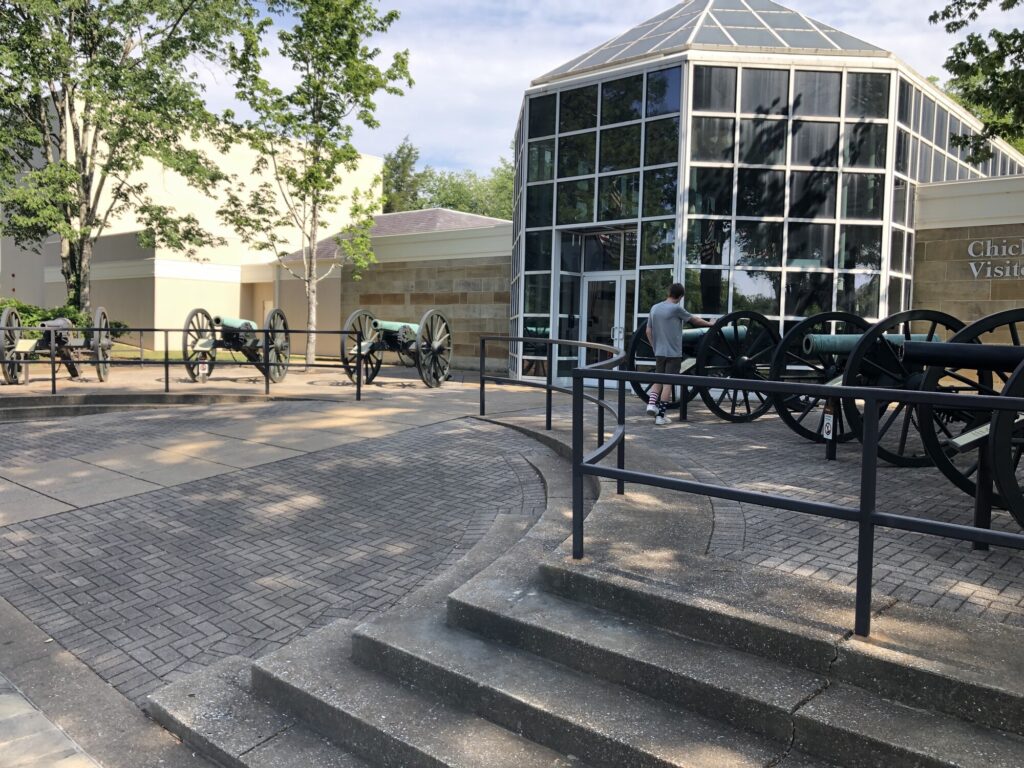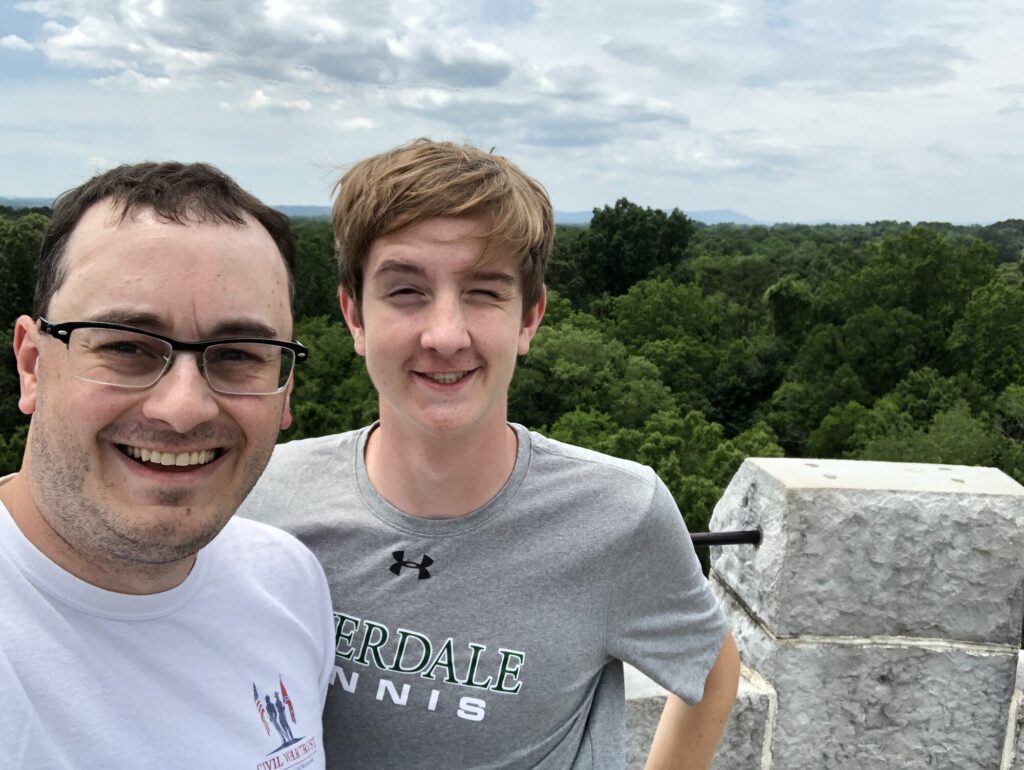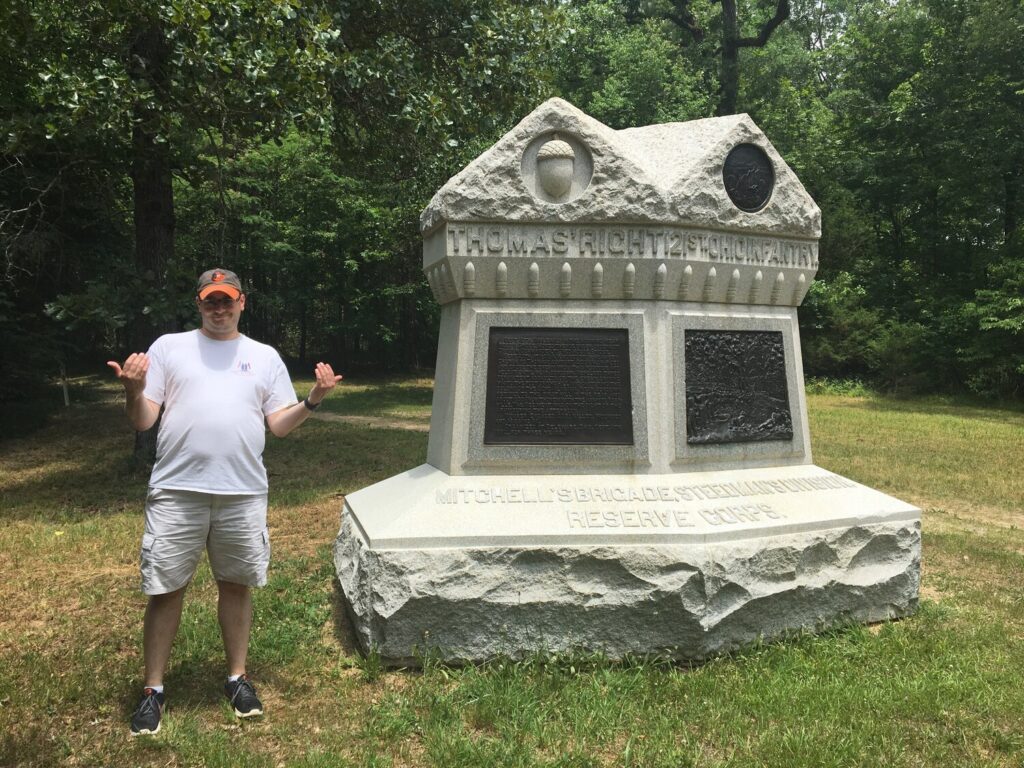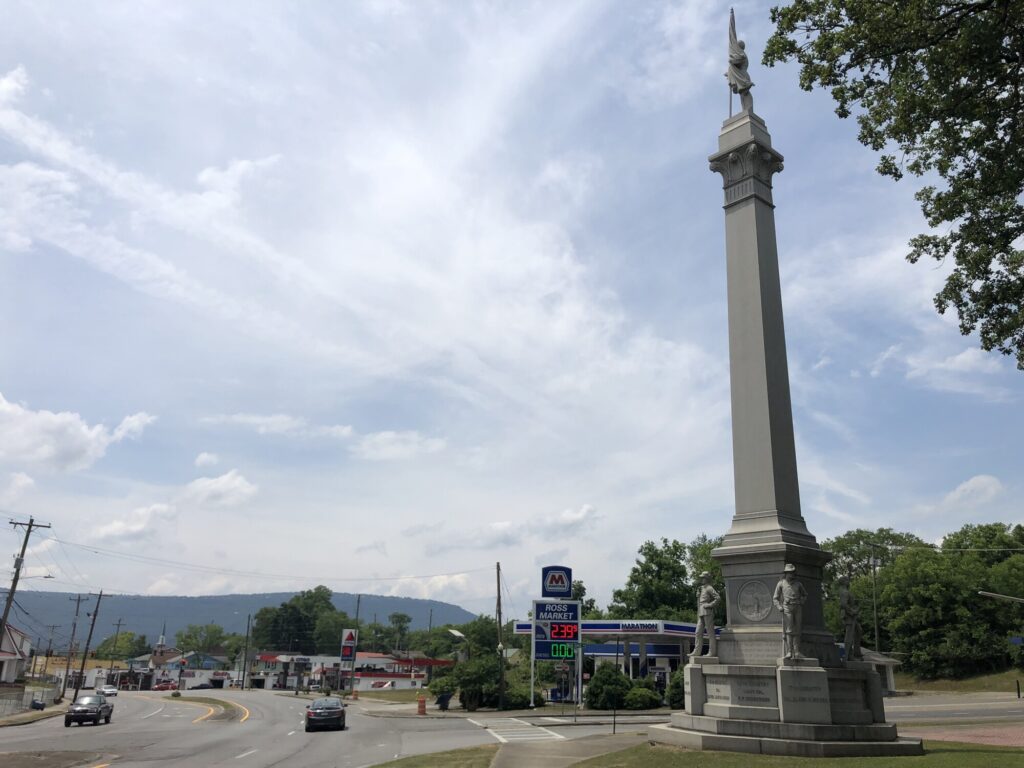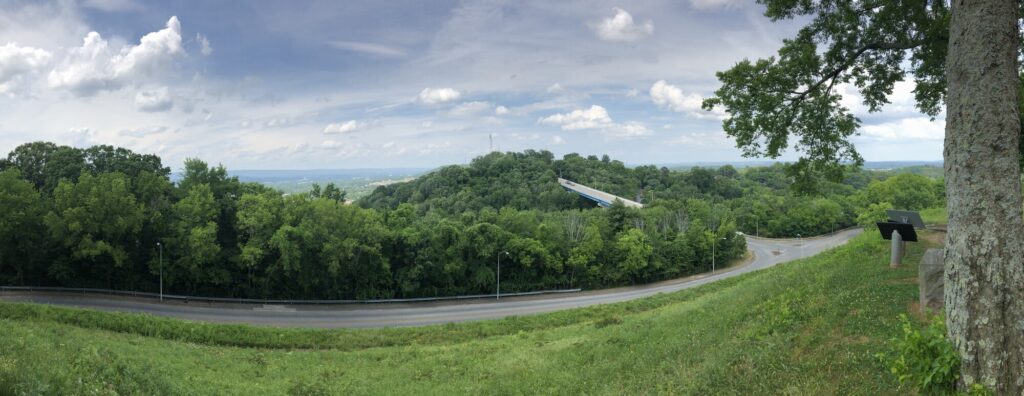Battlefield Visits #129 – The Battle of Cedar Creek
From my travels, August 1, 2019.
While on another road trip to visit Chattanooga – this time with more family members along, including my two boys – I decided that it would be nice to finally visit the site of the Battle of Cedar Creek. I could check it out for myself, and the boys could get another Junior Ranger badge. That’s fun for everyone!
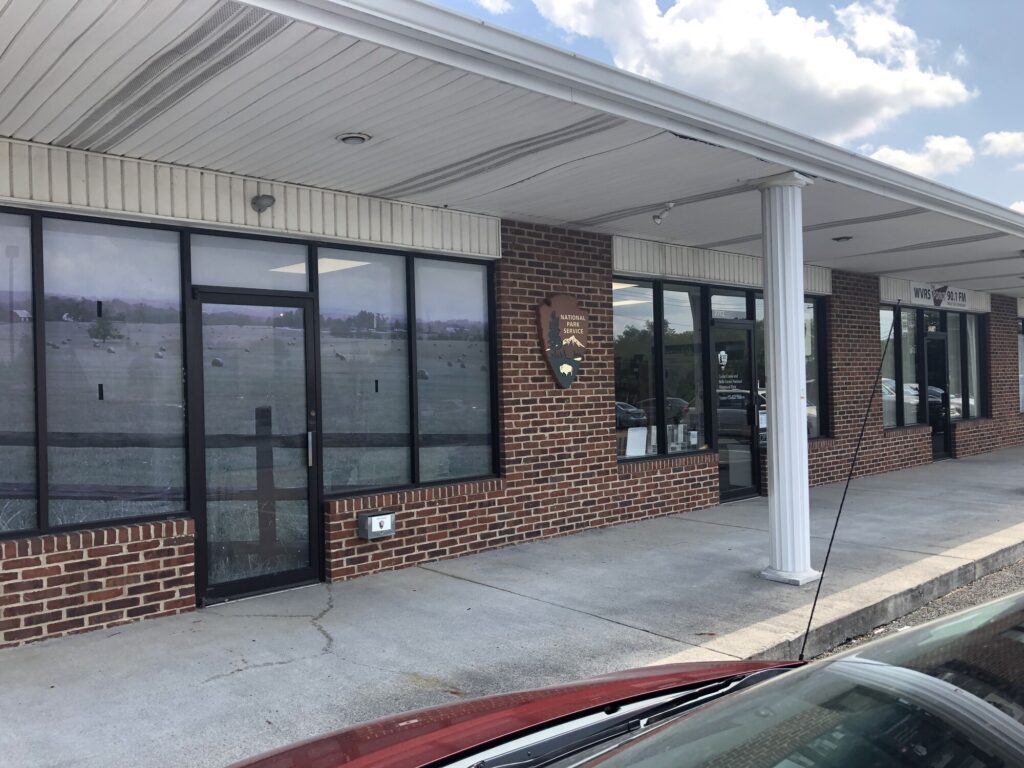
Cedar Creek and Belle Grove National Historical Park is a fairly new unit in the NPS – having only been established in late 2002. During our visit, it felt like a site that was still trying to figure itself out. For instance, the visitor contact station is at a strip mall in Middletown, VA. This is the only NPS site in the Shenandoah Valley, so I think they are trying to tell the whole story of both campaigns, with Cedar Creek as the climax of all that activity.
The visitor contact station had some cool museum stuff – including some interactive “try on” pieces for the boys. And you’ve got to love any battlefield with an electric map!
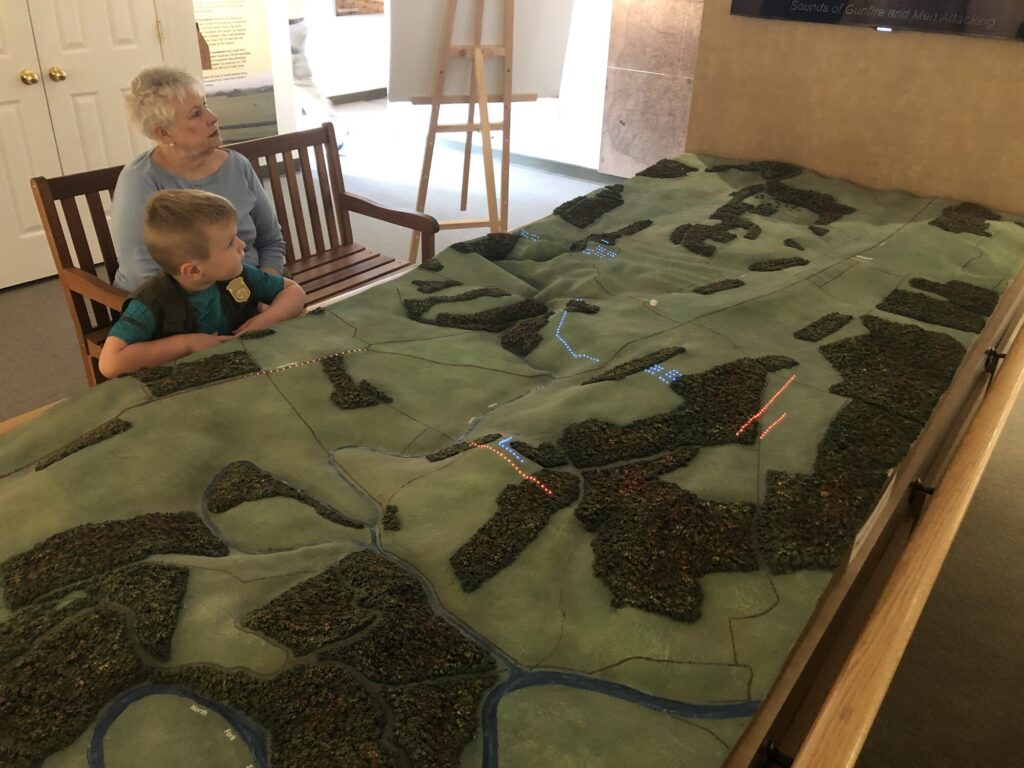
During our visit, I felt like the driving tour was a little rough, but thorough. The terrain here is gorgeous with rolling hills and valleys, and it isn’t too hard to imagine what it would have been like in the mid 19th century. It’s also pretty easy to see how the Confederates’ approach during their early morning attack would have been effectively covered by the lay of the land.
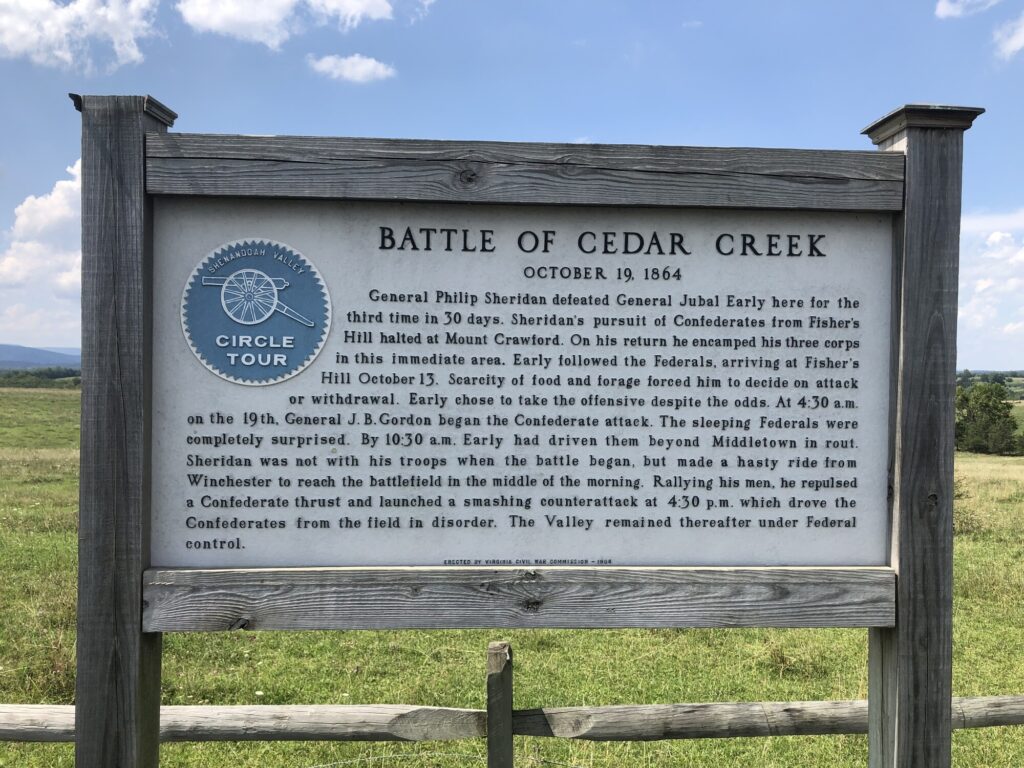
Back at the contact station, I helped the boys work through their Junior Ranger books and struck up a conversation with the ranger about all things Civil War – including my goal of seeing all the battlefields. Like most rangers I’ve encountered on these visits, he was a pleasure to speak with – I could have stayed there all day. Eventually, the boys had their books checked, got sworn in, and made a nice memory with their dad, and their “nene” and “baba”.
